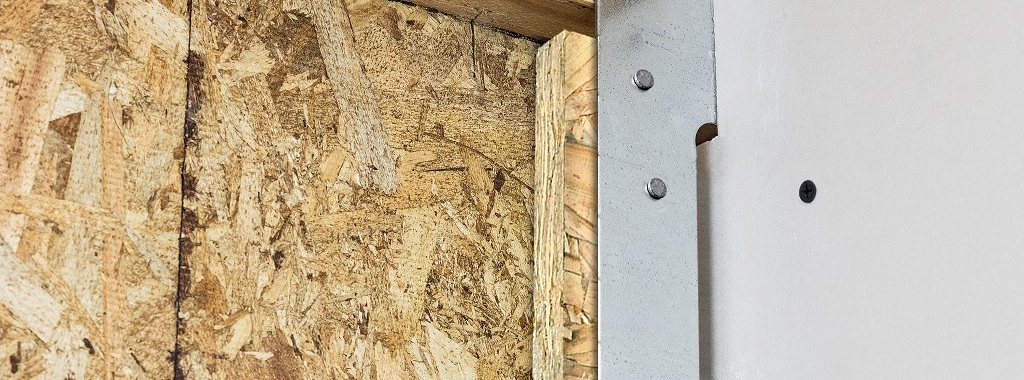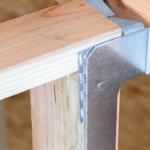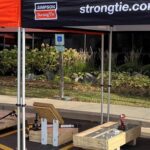As a regional director for WoodWorks, my job is to provide technical assistance related to the design of nonresidential and multi-family wood buildings. I’ve been with the program since it launched in 2007 and, although we support a full range of building types, I’ve seen a steady increase in the number of design professionals looking for information and support related to mid-rise wood structures in particular.
Reasons for this are summed up in a recent Wood Solution Paper by my colleague, Lisa Podesto, PE, Maximizing Value with Mid-Rise Construction, in which she points out that wood-frame construction is a cost-effective choice because it allows high-density use (five stories for many residential occupancy groups, six for office) at relatively low cost, while providing other benefits such as construction speed, structural performance, design versatility, sustainability, and a light carbon footprint.1
In particular, WoodWorks gets a lot of calls from engineers designing five-story, Type III wood-frame buildings, since the structural challenges are considerably different than they are for buildings up to four stories. We provide technical support (at no cost), from conceptual design through construction of a project, helping to work through issues such as the following:
Fire Retardant-Treated Building Elements
Type III buildings are required to have fire retardant-treated (FRT) exterior walls, and designers often struggle with how to specify FRT. While preservative-treated products are typically applied under a set of prescriptive requirements according to the American Wood Protection Association (AWPA) U1 standard, FRT wood is defined in IBC Section 2303.22 and differs from preservative-treated specification because treatments include proprietary formulations and application processes that instead meet a performance standard. Each of the treatment formulations has it’s own recommendations with regard to corrosion resistance of fasteners and strength reduction factors for wood members and connections. Full recommendations can be found in individual evaluation reports from FRT suppliers. Engineers might consider using the worst-case reduction factors for design to allow contractors the flexibility to source FRT from different suppliers.
Fire-Rated Wall Assemblies
While all Type III construction requires two-hour fire-rated exterior walls, it can be challenging to find tested assemblies that meet this criterion. When looking for these assemblies—and indeed all assemblies—it is helpful to keep a few things in mind:
- Structural panels may add to fire resistance – Many assemblies may not show wood structural panels in the approved assembly, but exterior walls usually require wood sheathing for lateral resistance of the building, sometimes on both sides of the wall. The addition of wood structural panels to assemblies should not diminish the fire rating, as acknowledged in the General Notes section of the Gypsum Association Fire Resistance Design Manual, which allows their addition. The second rule in Ten Rules of Fire Endurance Rating by Tibor Harmathy, presented in the American Wood Council publication, CAM for Calculating and Demonstrating Assembly Fire Endurance, says, “The fire endurance does not decrease with the addition of further layers.” Another resource that may assist designers is the ICC-ES Evaluation Report ESR-2586, Performance Standards and Qualification Policy for Structural-use Panels, which states, “Structural-use panels may be installed between the fire protection and the wood studs on either the interior or exterior side of fire-resistance-rated wood frame wall and partition assemblies described in the applicable code, provided the length of fasteners is adjusted for the added thickness of the panel.”
- FRT studs may be used – For Type III construction, FRT wood is also a requirement in exterior wood wall assemblies, in addition to the two-hour rating. Some two-hour-rated assemblies may not specifically state that FRT studs may be used, but the UL Guide Information clarifies that FRT may be used in place of non-treated wood in any assembly.
Fire-Rated Floor Assemblies
Both Type IIIA and Type VA construction require one-hour-rated floor assemblies. Even when using Type B, generally considered unprotected construction, with a residential occupancy, floors between dwelling units still need protection per IBC Section 711.3.
- Floors less than 10 inches deep – As with wall assemblies, finding fire-rated floor assemblies that meet the design parameters can be challenging. In mid-rise applications, it is common for designers to go to great lengths to minimize the floor depth in order to maximize the plate height at every level and still stay beneath the overall height limit of the structure. However, there are few available UL assemblies with a minimum joist depth of less than 10-inch nominal. Designers can use either IBC Section 721 with the Deemed to Comply tables, or Section 722 on calculated fire resistance to address this issue.
- Using structural composite lumber in floors – While a similar lack of published options is true of assemblies with structural composite lumber (such as laminated veneer lumber, laminated strand lumber or parallel strand lumber), the argument for using these products in fire-rated assemblies lies in their ICC-ES reports. The section under Calculated Fire Resistance states that the fire resistance of an exposed wood member—solid sawn, structural glued laminated timber (glulam) and structural composite lumber—can be calculated using Chapter 16 of the National Design Specification® (NDS®) for Wood Construction, which implies that the fire resistance is equal to that of solid sawn members. The structural adhesives used can withstand temperatures beyond that of wood.
- Heavy timber corridor decking – Some designers use a heavy timber decking over corridors allowing taller plate heights and/or unencumbered area for utilities to run above a drop ceiling. This accomplishes a one-hour resistance by using char calculations for exposed wood elements as outlined in Chapter 16 of the NDS stipulated as an alternate method in IBC 722.1.
If you’re designing a mid-rise wood building and have questions—e.g., about fire and life safety, lateral and vertical loads, how to address shrinkage, etc.—I encourage you to contact your local WoodWorks regional director. The WoodWorks website (woodworks.org) also offers a wide range of technical information on mid-rise structures, and we welcome inquiries to the project assistance help desk (help@woodworks.org).
1For more information, visit www.woodworks.org/why-wood
2Information is based on the 2012 International Building Code unless otherwise indicated.
… To be continued in next week’s blog with information on details and fire rating of floor-to-wall intersections..







1 thought on “Fire Protection Considerations with Five-Story Wood-Frame Buildings Part 1”